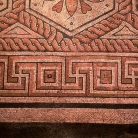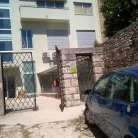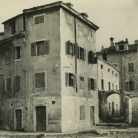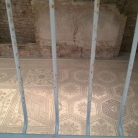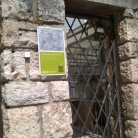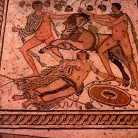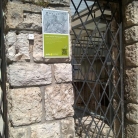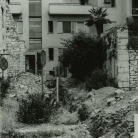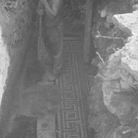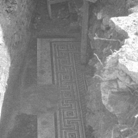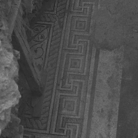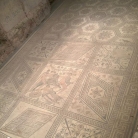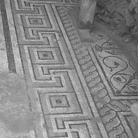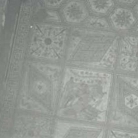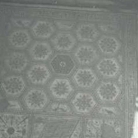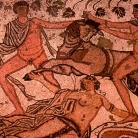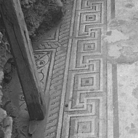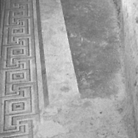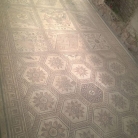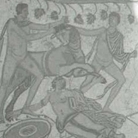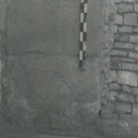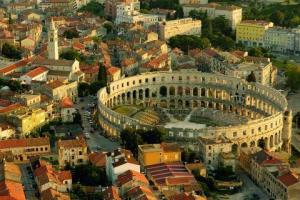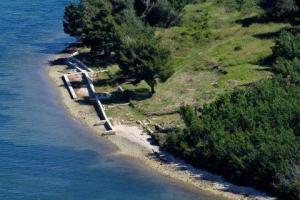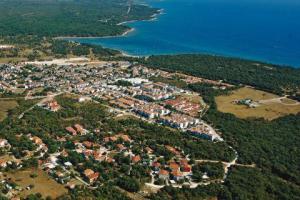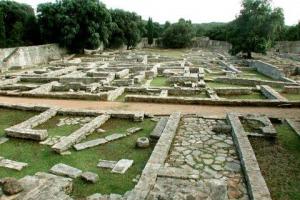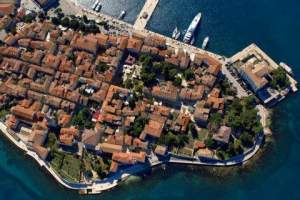The mosaic of the punishment of Dirke
The mosaic of the punishment of Dirke was found near the Church of St. Mary Formosa. The magnificent mosaic is divided into two parts. The mythological topic of the punishment of Dirke is extremely rare.
After the WW2, during the clearing of bombarding debris, a magnificent mosaic depicting the mythological punishment of Dirke was found near the Church of St. Mary Formosa, as a part of the area surrounding the house in the Street of the Sergi, two meters below the ground. The mosaic, dated to the 2nd or the 3rd cc., covered the floor of the central room of a Roman residential house.
Its surface of 65 square meters consists of two 40 bay parts surrounded by the meander, the decorative frame. The smaller one on the right is divided into hexagons framed by a two-coloured braid with the motifs of fauna and flora. The left part consists of nine uneven rectangular forms, in the centre of which is the largest one with the image of two young men holding a bull by its horns and a woman below them. Complex geometrical motifs with animalistic details are shown in other bays.
The central image is the mythological punishment of Dirke, rarely depicted in art. Thus, this mosaic represents one of the most beautiful mosaics in the world from the Antiquity period. The only known images include the Farnese Bull kept in the Naples, and Dirke as a part of the mural paintings series in the Vatican Museums. According to the myth, Antiope, Dirke's cousin, fell in love with Zeus and gave birth to twins, Amphion and Zetos.
Dirke was extremely jealous and had Antiope imprisoned, and her sons exiled to roam the woods, until Zeus took pity on them and sent a shepherd as their guardian. Many years later, during the celebration of Dionysus, the mother and sons met. Dirke thought the sons would not recognize Antiope, ordered them to bring a bull and tie their mother so that the animal might tear her apart. As Zeus sent the shepherd with the information of the woman being their mother, they changed their mind, and tied Dirke instead of Antiope. The Pula mosaic depicts the very moment of Amphion and Zetos bringing the bull in front of tied Dirke.
Conserved and restored, it was left in its original place, where it can be seen today.
Ulica Benediktinske opatije 13, HR-52100 Pula-Pola












